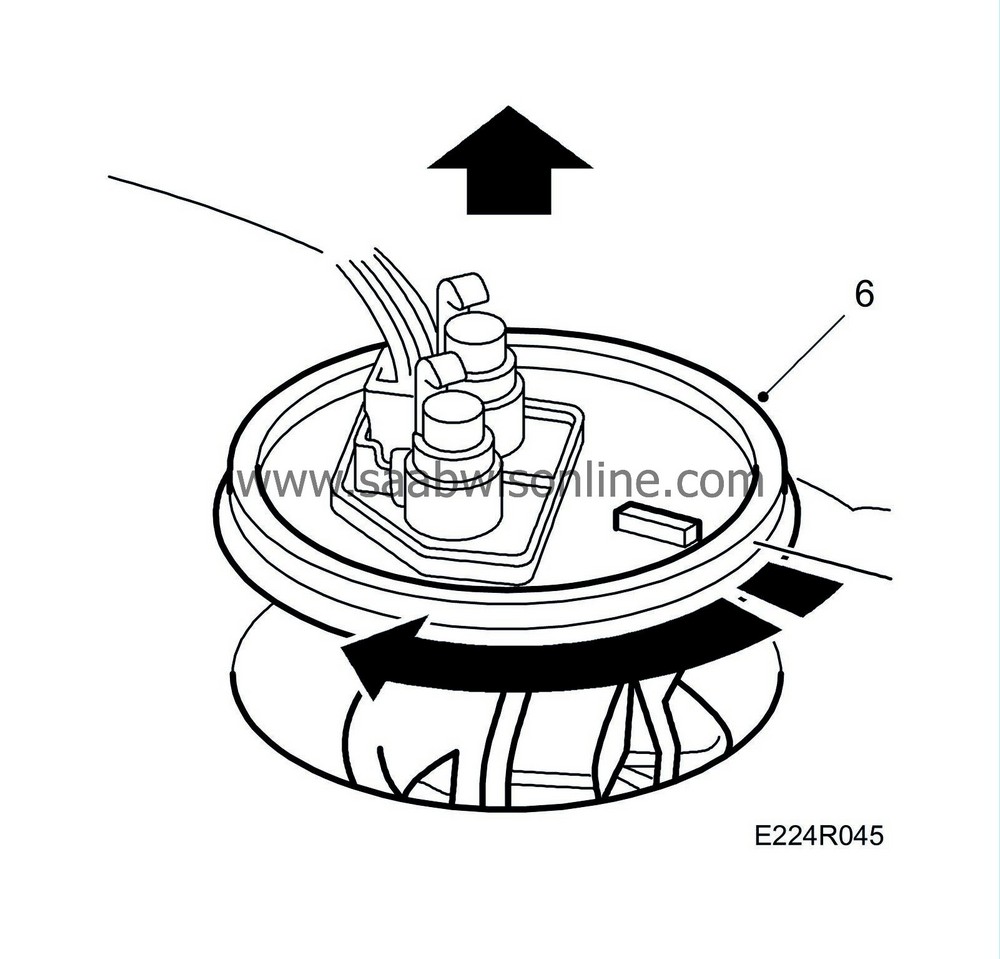Fuel pump
| Fuel pump |
|
||||||||||||||||||||||
| To remove |
| Important | ||
|
The car should be parked on a level surface. If the tank is full and the car is jacked up at the rear when the pump is removed, it is very likely that fuel will run out. |
||
|
Use protective paper and perhaps a receptacle to protect the carpets when removing the pump as fuel could easily run out or be spilt. |
||
| 1. |
Raise the rear seat cushions and fold the carpeting out of the way.
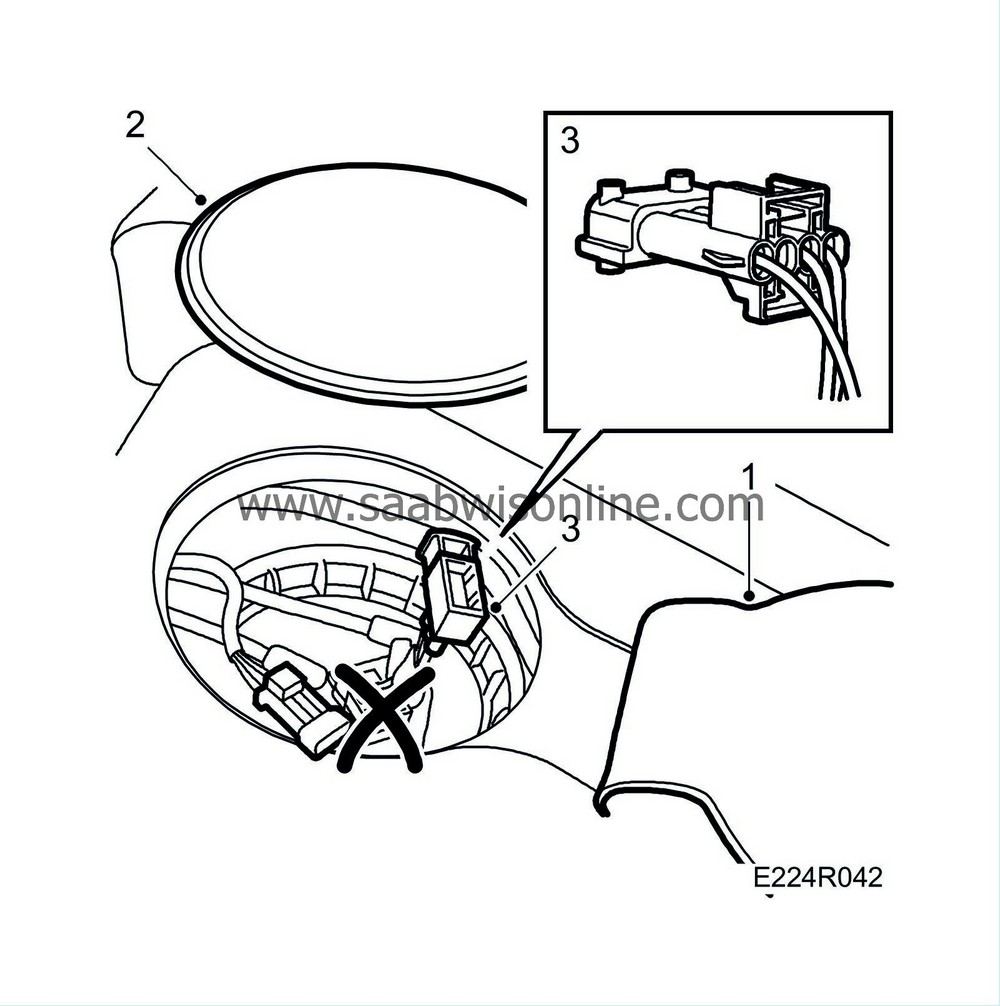
|
|
| 2. |
Remove the fuel pump cover.
|
|
| 3. |
Unplug the upper connector as illustrated.
|
||||||||||
| 5. |
Remove the screw ring. Use the special tool (part no. 83 94 462).

|
|
| 7. |
Transfer the pump to a suitable receptacle and pour off the fuel.
|
|
| To fit |

| 1. |
Clean sealing surfaces.
|
|
| 2. |
Fit a new O-ring in the groove in the tank.
|
||||||||||
| 3. |
Carefully lower the pump into its correct position, making sure that the alignment marks on the tank and fuel pump are opposite each other. Carefully press the pump down into position.

|
|
| 4. |
Lubricate the screw ring threads and the top of the pump with acid-proof vaseline to prevent the pump from rotating as the screw ring is tightened
|
|
| 5. |
Fit the screw ring and tighten it using tool No. 83 94 462.
Tightening torque 75 Nm (55 lbf ft) |
|
| 6. |
Check the O-rings and lubricate them and the fuel line connections with acid-proof vaseline and connect these to the pump. Watch out for spilt fuel.
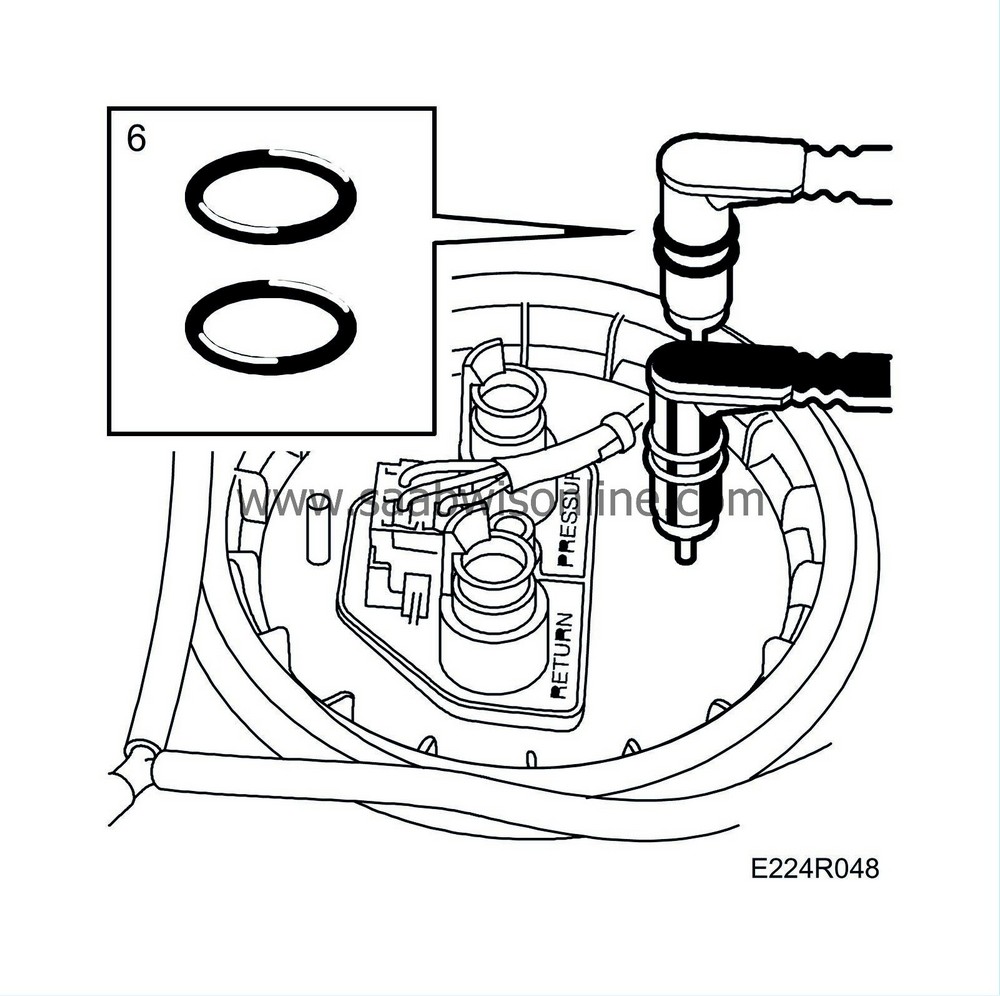
|
|
| 7. |
Make sure that the yellow hooks have snapped in place over the connections.
|
|
| 8. |
Plug in the connector and spray it with a contact cleaner like Kontakt 61 (part No. 30 04 520).
|
|
| 9. |
Check that the pump works properly and that it does not leak.
|
|
| 10. |
Fit the fuel pump cover, return the rear seat cushions to their places and fold back the carpeting.
|
|
| Checking the non-return valve |
| 1. |
Remove the valve cap. Connect the pressure gauge (tool No. 83 93 852) and adapter (tool No. 83 94 744) to the fuel rail with the pressure gauge “safety” on. Use the tool with the “Safety” off.
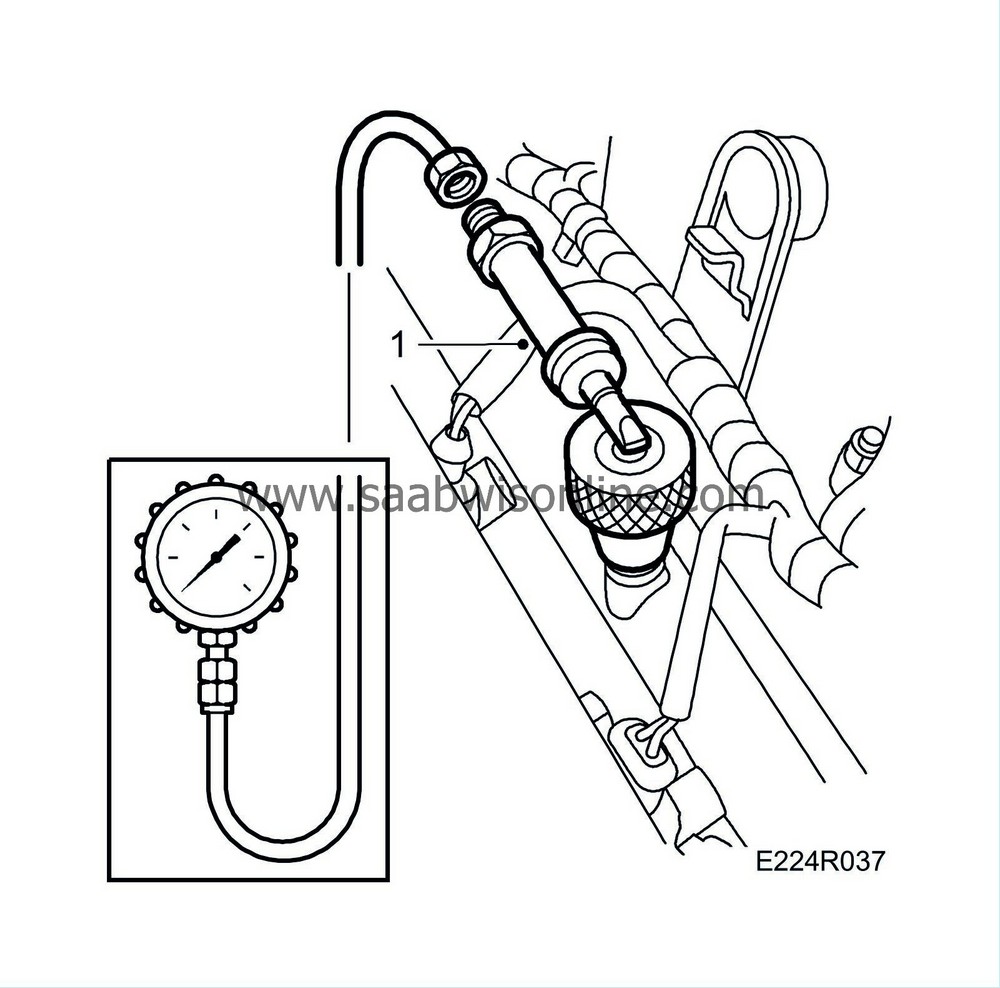
|
|
| 2. |
Activate the fuel pump with the diagnostics instrument.
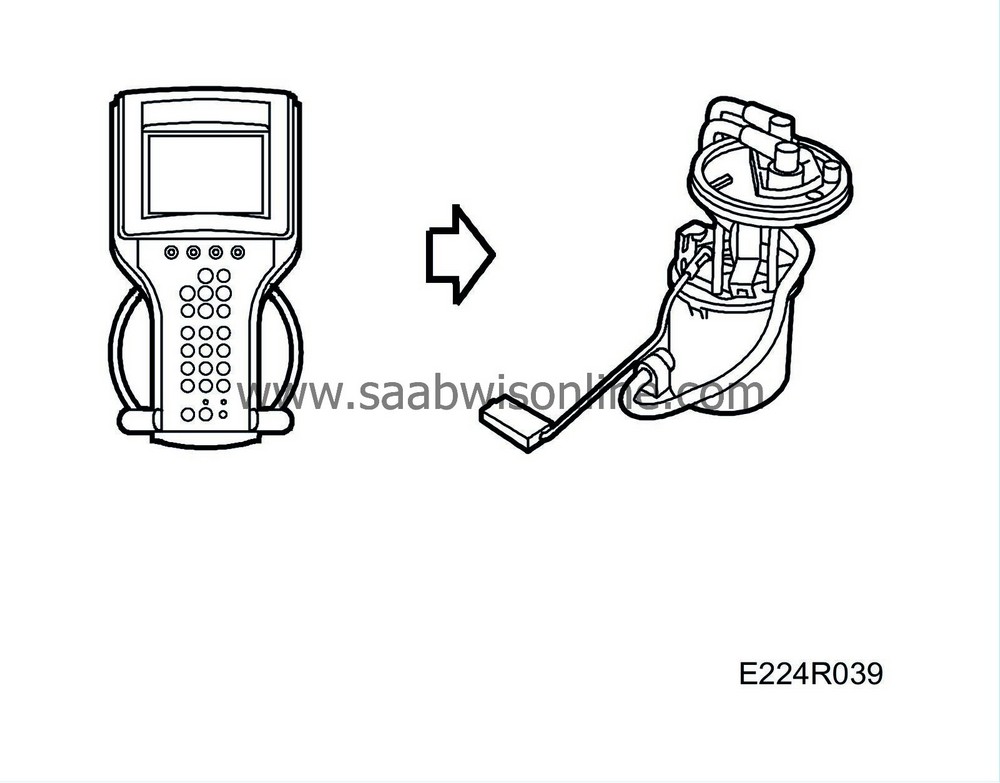
|
|
| 3. |
Run the pump manually until the pressure gauge stops rising.
|
|
| 4. |
Read the pressure gauge. Turn off the pump. The residual pressure after 20 minutes should be at least 2.3 bar (33 psi).
|
|
| 5. |
If the residual pressure is too low then check the non-return valve by detaching it from the pump outlet to see if it is leaking.
|
|
| 6. |
Remove the tool (part No. 83 93 886).
|
|
| Changing the non-return valve |
| Important | ||
|
If the non-return valves on both the delivery line and the return line are changed then it is important to make sure they are fitted on the correct line. |
||
| 1. |
Expose the non-return valve.

|
|
| 2. |
Cut the fuel delivery line at the nipple as illustrated using a razor blade or sharp knife, etc.
|
|
| 3. |
Fit the tool (part No. 83 94 546) on the fuel line.
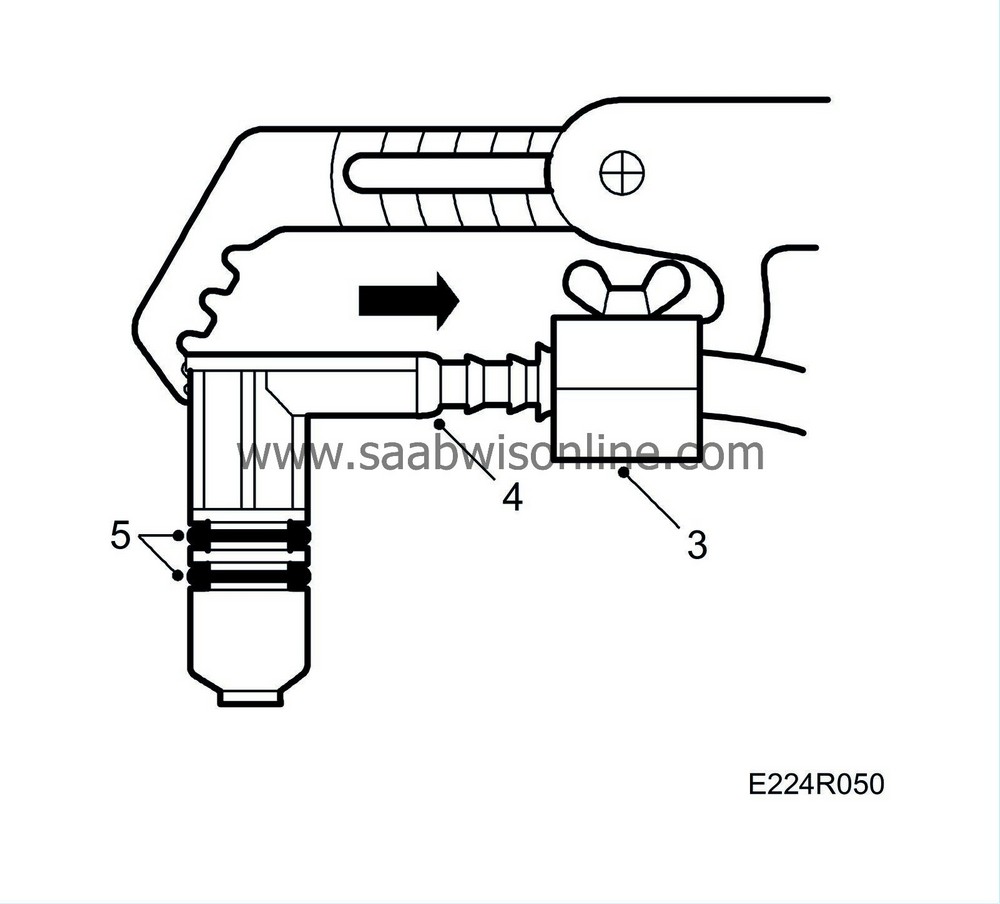
|
|
| 4. |
Press the new non-return valve into the line with the fitting facing the pump.
|
|
| 5. |
Fit new O-rings on the valve. Lubricate them with non-acidic vaseline.
|
|
| 6. |
Plug in the connector and spray it with Kontakt 61 contact cleaner (part No. 30 04 520). Connect the fuel lines.
|
|
| Checking the fuel gauge float arm position |
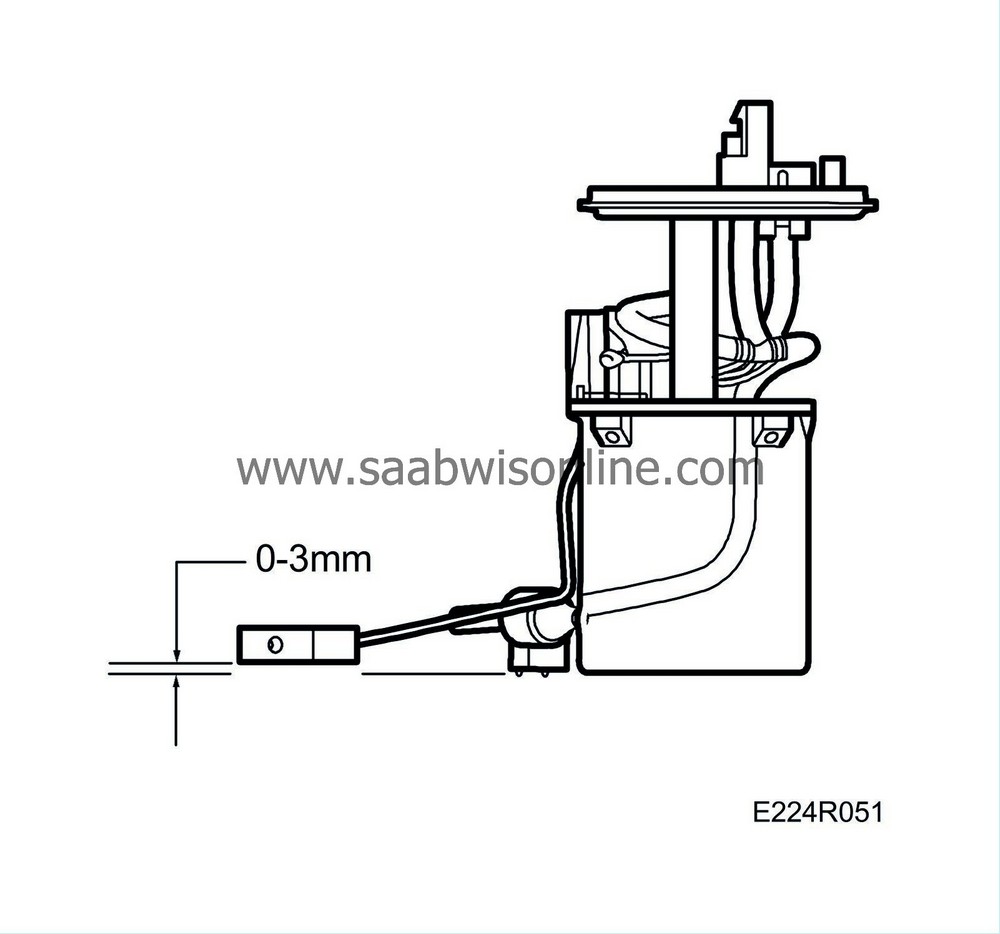
With the pump placed on a level surface, the distance between the surface and the bottom of the float should be 0-3 mm.
The sensor resistance should be:
| • |
Empty tank, float at bottom: 50±1.5 ohms.
|
|
| • |
Full tank, float at top: 425±6.5 ohms.
|
|

 Warning
Warning

